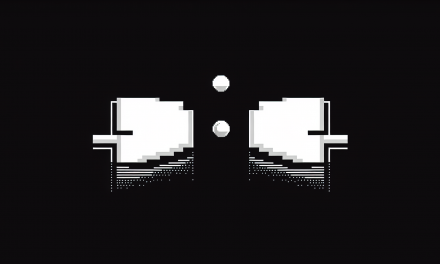Picture yourself in 2007. You flip open your phone to send a text, scrolling through letters with multiple button presses. You carry an MP3 player for music, a separate camera for photos, and perhaps a Palm Pilot for your calendar. Each device has its own purpose, its own battery, its own learning curve. Now imagine someone walking onto a stage and saying, “Today, we’re going to put all of that into your pocket—and make it better than anything that came before.”
That someone was Steve Jobs at the Moscone Center in San Francisco on January 9, 2007. What happened next wasn’t just a product launch; it was a masterclass in design thinking that would reshape how we interact with computers forever.
The Magic Trick Nobody Saw Coming
Jobs was famous for his “one more thing” moments—those theatrical reveals that left audiences gasping. But the iPhone presentation was different. It wasn’t tucked away at the end as a surprise. Instead, Jobs spent the first twenty minutes building suspense around three revolutionary products: a widescreen iPod with touch controls, a revolutionary mobile phone, and a breakthrough internet communications device.
Then came the revelation: “These are not three separate devices. This is one device. And we are calling it iPhone.”
Think about this like a magician revealing their method. Jobs didn’t just show you the final trick—he walked you through how three seemingly impossible things could exist in the same space. The genius wasn’t just in the technology; it was in helping people reimagine what a computer could be.
Thinking Different About Computers
Before the iPhone, computers lived on desks. They had keyboards, mice, and screens that faced you from a distance. Even laptops, revolutionary as they were, still maintained that desktop metaphor—a workspace you had to sit down and engage with deliberately.
But what if computing didn’t require sitting down? What if the interface was so intuitive that a two-year-old could use it? What if instead of learning computer language, the computer learned human language?
The iPhone’s interface worked like magic because it followed patterns we already knew. Want to turn a page? Swipe like you’re turning paper. Want to make something bigger? Pinch and stretch like you’re pulling taffy. Want to scroll through a list? Flick with your finger like you’re spinning a rolodex. These weren’t computer gestures—they were human gestures that the computer learned to understand.
The Art of Invisible Complexity
Here’s where the real computer science magic happened: making incredibly complex technology feel simple. Behind that smooth glass screen was a miniature computer more powerful than machines that filled entire rooms just decades earlier. The iPhone packed a processor, memory, sensors, cameras, speakers, and radios into something thinner than most paperback books.
But none of that mattered to users. What mattered was that when you touched an icon, something happened immediately. When you tilted the phone, the screen rotated. When you put it to your ear, it knew you were making a call and turned off the screen so your cheek wouldn’t accidentally hang up.
This is computational thinking at its finest: hiding complexity behind simplicity. Just like a well-written function in programming, the iPhone’s interface gave you powerful capabilities without making you understand the intricate processes running underneath.
Touch as a Universal Language
The decision to eliminate the physical keyboard was perhaps the boldest design choice. BlackBerry users scoffed—how could you possibly type without feeling buttons under your fingers? But Jobs and his team understood something profound about human-computer interaction: our fingers are incredibly smart.
Think about how you learned to tie your shoes. Nobody gave you a manual explaining the precise motor control required for each loop and pull. You practiced, you made mistakes, and eventually your fingers “remembered” the pattern. The iPhone’s touchscreen worked the same way—it trusted your fingers to learn, adapt, and become more precise over time.
The virtual keyboard could change for different tasks—numbers when you needed them, symbols when you were writing, even different layouts for different languages. Try doing that with physical keys! The touchscreen wasn’t just eliminating buttons; it was creating infinite possibilities for interaction.
Personal Computing, Literally
Perhaps the most revolutionary aspect of the iPhone wasn’t its technology—it was its intimacy. Desktop computers belonged to families or offices. Laptops were personal but not private. The iPhone was yours in a way no computer had been before.
It knew your contacts, your photos, your location, your preferences. It traveled with you, woke up with you, and was probably the last thing you touched before going to sleep. This wasn’t just a computer that fits in your pocket; it was a computer that became part of your daily rhythm.
This intimacy changed how we think about data and applications. Your iPhone wasn’t just processing information—it was processing your life. Photos weren’t just image files; they were memories. Text messages weren’t just data packets; they were conversations with people you cared about.
The Ripple Effect of Revolutionary Thinking
The iPhone’s influence extends far beyond smartphones. Its design principles—intuitive gestures, immediate feedback, elegant simplicity—now shape everything from car dashboards to smart home devices. The idea that powerful computing should feel effortless has become the standard we expect from all our digital interactions.
Even more importantly, the iPhone proved that the best technology doesn’t just solve problems—it anticipates needs you didn’t know you had. Before 2007, nobody was asking for a device that could instantly identify songs, navigate using GPS, or let you video chat with someone across the world. But once these capabilities existed in an accessible form, they became essential parts of modern life.
The next time you effortlessly swipe through photos or ask your phone for directions, remember that these interactions represent decades of computational thinking compressed into gestures so natural they feel like magic. That’s the real genius of the iPhone—not that it put a computer in your pocket, but that it made you forget you were using a computer at all.
Sometimes the most profound innovations don’t announce themselves with fanfare. They simply make complex things feel obvious, as if they’d always been that way. The iPhone reminds us that the best problem-solving often involves not just creating new solutions, but fundamentally reimagining what the problem was in the first place.








